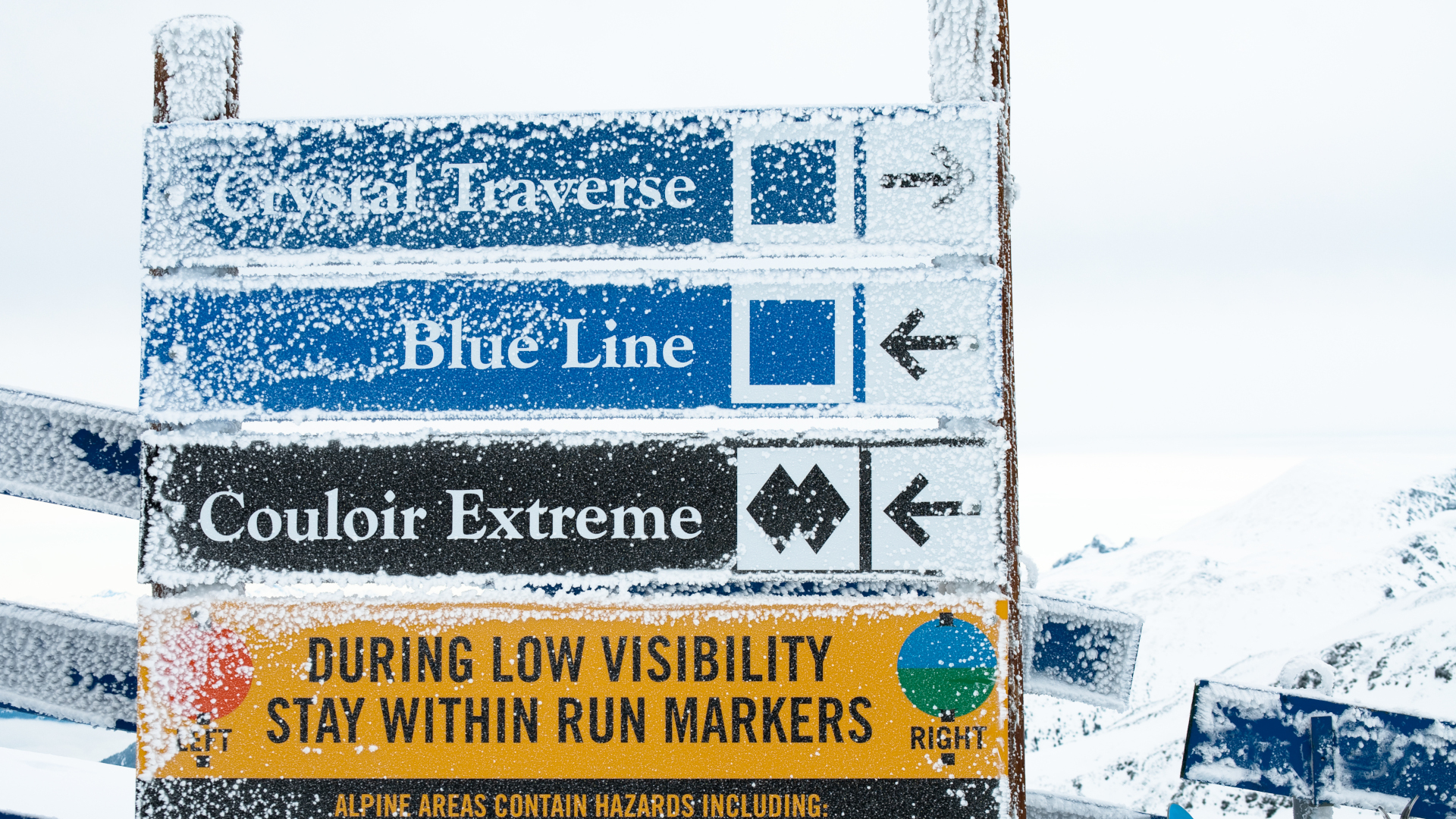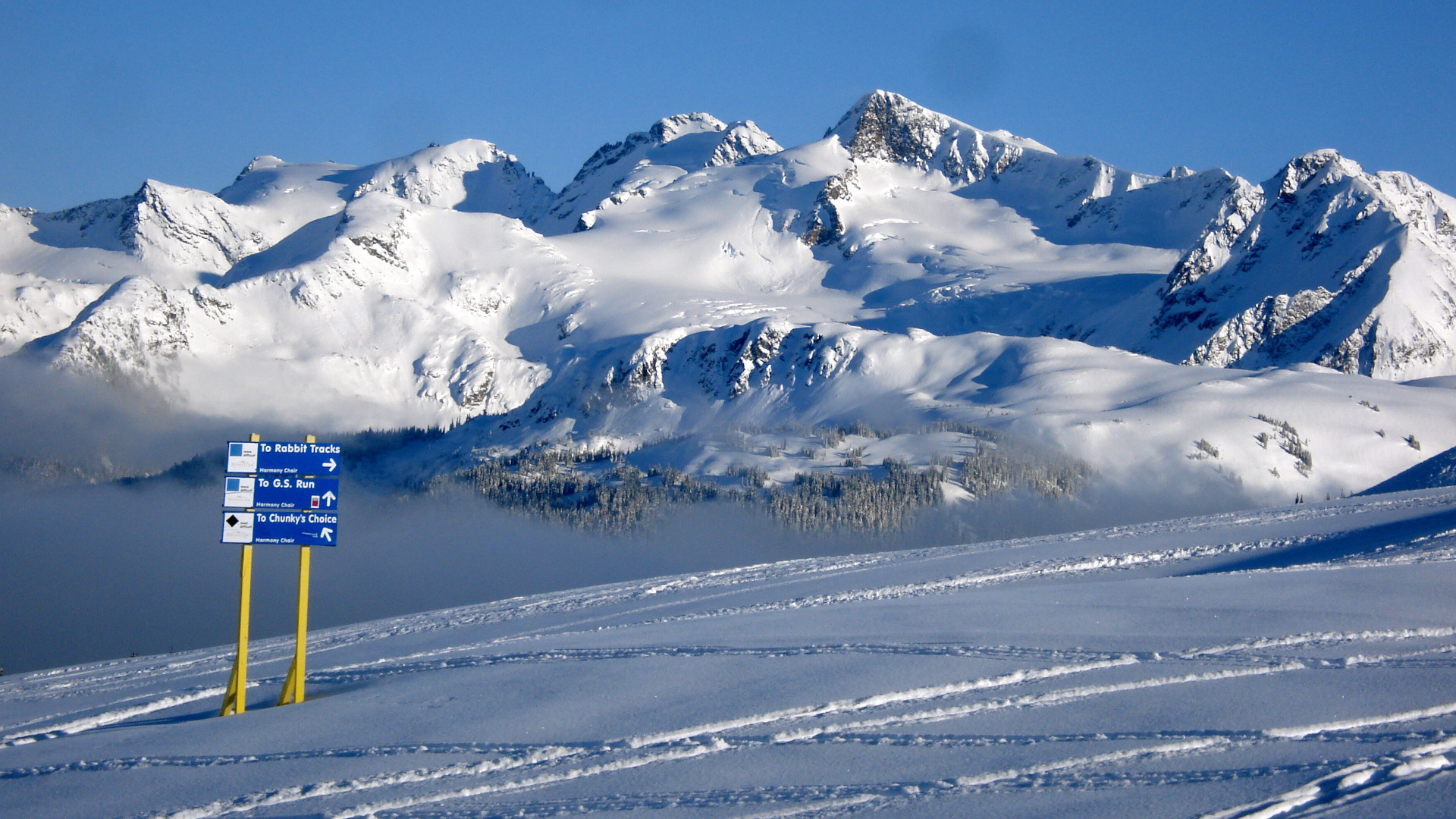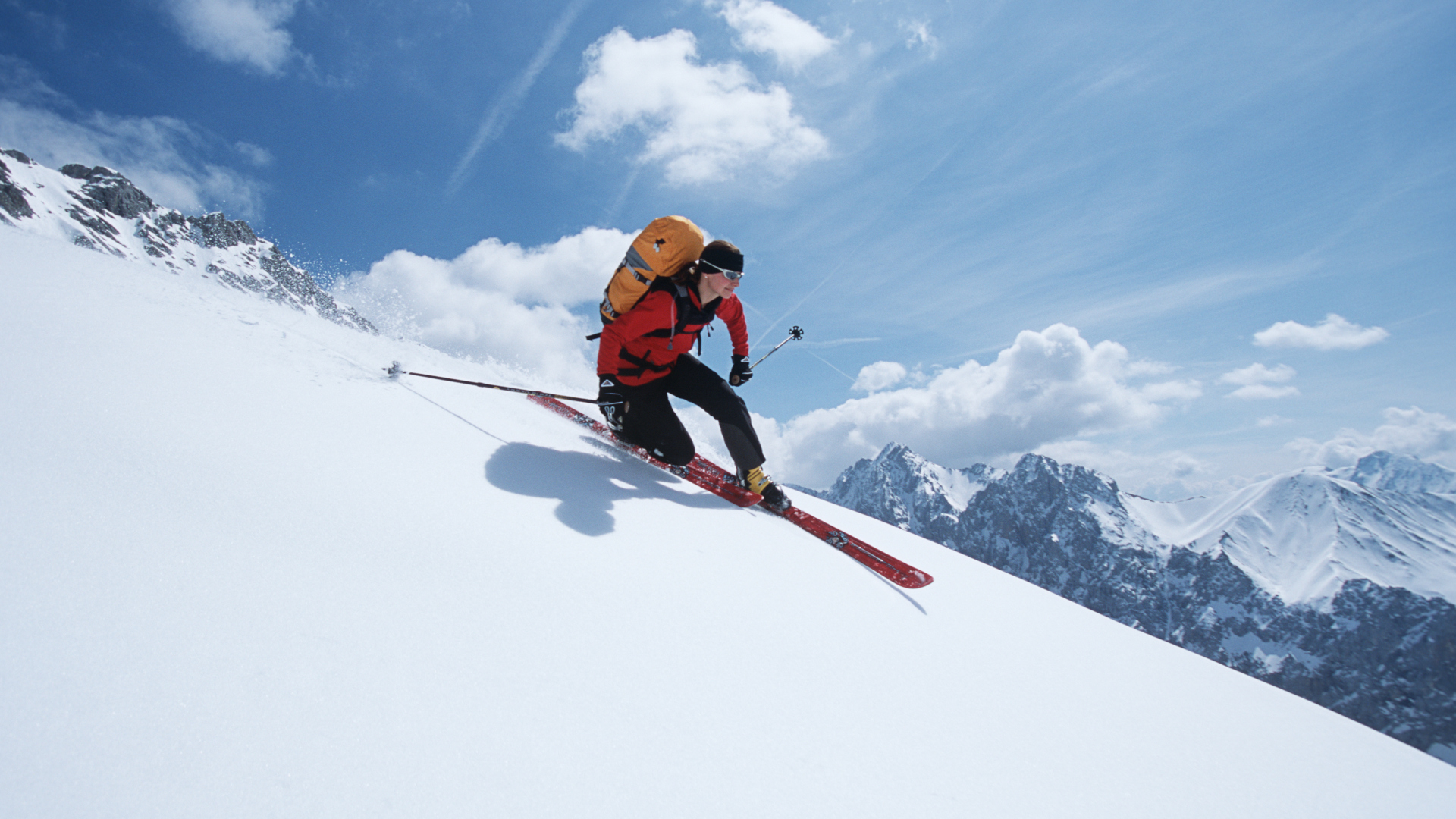What do the trail symbols on ski runs mean?
Ever wondered what the trail symbols on ski runs mean? We break down the skiing difficulty rating system so you can choose the best run for your ability

If skiing is your winter sport of choice, when you get off the chairlift at the top of the mountain, you’ll see that the ski runs each have a colored symbol next to the name of the run. In North America, it will be either a green circle, a blue square, a black diamond or an orange rectangle. So what do these trail symbols on ski runs mean, you might be asking?
If you’re skiing on a resort, you’ll want to understand the difficulty of each run regardless of what type of skiing you’re doing. Ski runs are rated on their difficulty level, which is then indicated by the symbol, and gives you an idea of what to expect from the run before you attempt it. This is helpful whether you’re a brand new beginner wanting to stay away from cliffs, trees and steep trails or an expert skier looking for a new challenge.

The difficulty of a ski run is certainly somewhat objective, but mostly, ski runs are rated on grade, which means how steep they are. For reference, a 100% grade means a 45 degree angle, but don’t worry, you’re likely to only be skiing at around 40% on the steepest resort runs. Then there are some other factors that might determine the difficulty level, such as whether the run is groomed, which makes it easier, and how narrow it is, which makes it harder because you can't turn to slow yourself down.
Read on to find out exactly what the trail symbols on ski runs mean in North America, and check out our guide to the best ski gloves if you’re still getting kitted out for the season.
Trail symbols on ski runs: what do they mean?

While trail symbols on European ski resorts tend to vary from mountain to mountain and country to country, trail symbols on ski runs in North America are standardized across the board, meaning you won’t encounter different systems from one ski resort to another.
That said, trail rankings are all a bit relative to that particular mountain, so if a mountain is very steep, its easiest runs will be a lot more challenging than the easiest runs on a mellower mountain. It’s also helpful to know that a run will be rated based on its most difficult section, so a run rated as intermediate or expert may be so because it has one, difficult part, meaning it may not be off-limits to you.

Green circle
Beginner level terrain, these runs will have a grade of no more than 25% and be groomed, wide, open trails or snow covered roads used by maintenance vehicles in the summer. Green runs are great for practising your turns and stops, or just cruising down when your legs are tired after a long day.
All the latest inspiration, tips and guides to help you plan your next Advnture!
Blue square
Intermediate terrain, these runs will have a grade of between 25% and 40% and will usually be groomed. As a brand new beginner, it’s a good idea to keep off these, but once you have a little experience, you can start to test them out.
Black diamond
Expert terrain, these runs will be steep, with a grade of more than 40% and will probably be ungroomed (unless it’s a race track) and may have moguls or deep snow. These runs also may be narrower. Only attempt these runs if you are an experienced skier and with someone else. If you find yourself on one accidentally, don’t be afraid to sidestep down or slide slowly down sideways until you can connect to an easier run.

Double black diamond
There’s another level of expert terrain denoted by two black diamonds and that means experts only – absolutely no one else should attempt these. In addition to being very steep, these runs will be very narrow and will likely take you through tight trees, over exposed rock and even cliffs. You need lots of experience to even attempt these and it’s okay if you never ski a black diamond.
Orange rectangle
Welcome to the terrain park, where you’ll find the half-pipe, jumps, rails and boxes – everything you need for tricks. If skiing park isn’t your thing, you can avoid these areas. If you find yourself in one accidentally, you can always ski down either side of the park and it can be quite fun to pause and watch other skiers do tricks.
A few resorts in North America will use a combination of the different symbols (such as a black diamond on a blue square) to indicate that a run is between two ratings, but this is unusual.
| Symbol | Difficulty level | Description |
|---|---|---|
| Green circle | Beginner | Grade of no more than 25%, groomed, wide, open trails. |
| Blue square | Intermediate | Grade of between 25% and 40% and will usually be groomed. |
| Black diamond | Expert | Grade of more than 40% and will probably be ungroomed, may have moguls or deep snow. These runs also may be narrower. |
| Double black diamond | Experts only | Very steep, these runs will be very narrow and will likely take you through tight trees, over exposed rock and even cliffs. |
| Orange rectangle | Terrain park | Terrain park, with half-pipe, jumps, rails and boxes. |
Trail symbols on ski runs: how to use them

Now you know what the trail symbols on ski runs mean, you can use them to navigate your way down the mountain. Almost always, your chosen run will intersect with other runs of varying difficulty levels on the way down, meaning you can mix things up from top to bottom. It is helpful to take a look at the trail map – found at the base, the top of the lift and often on the safety bar of the chairlift – and make sure that there is a way down you feel comfortable with.
Because difficulty ratings are relative to the mountain they’re on, it’s recommended that you do a little research on the mountain before you ski – enquire at the ticket office when you pick up your ski pass or ask friendly locals on the chairlift.
Julia Clarke is a staff writer for Advnture.com and the author of the book Restorative Yoga for Beginners. She loves to explore mountains on foot, bike, skis and belay and then recover on the the yoga mat. Julia graduated with a degree in journalism in 2004 and spent eight years working as a radio presenter in Kansas City, Vermont, Boston and New York City before discovering the joys of the Rocky Mountains. She then detoured west to Colorado and enjoyed 11 years teaching yoga in Vail before returning to her hometown of Glasgow, Scotland in 2020 to focus on family and writing.

